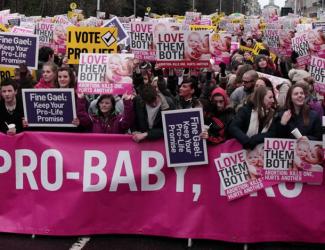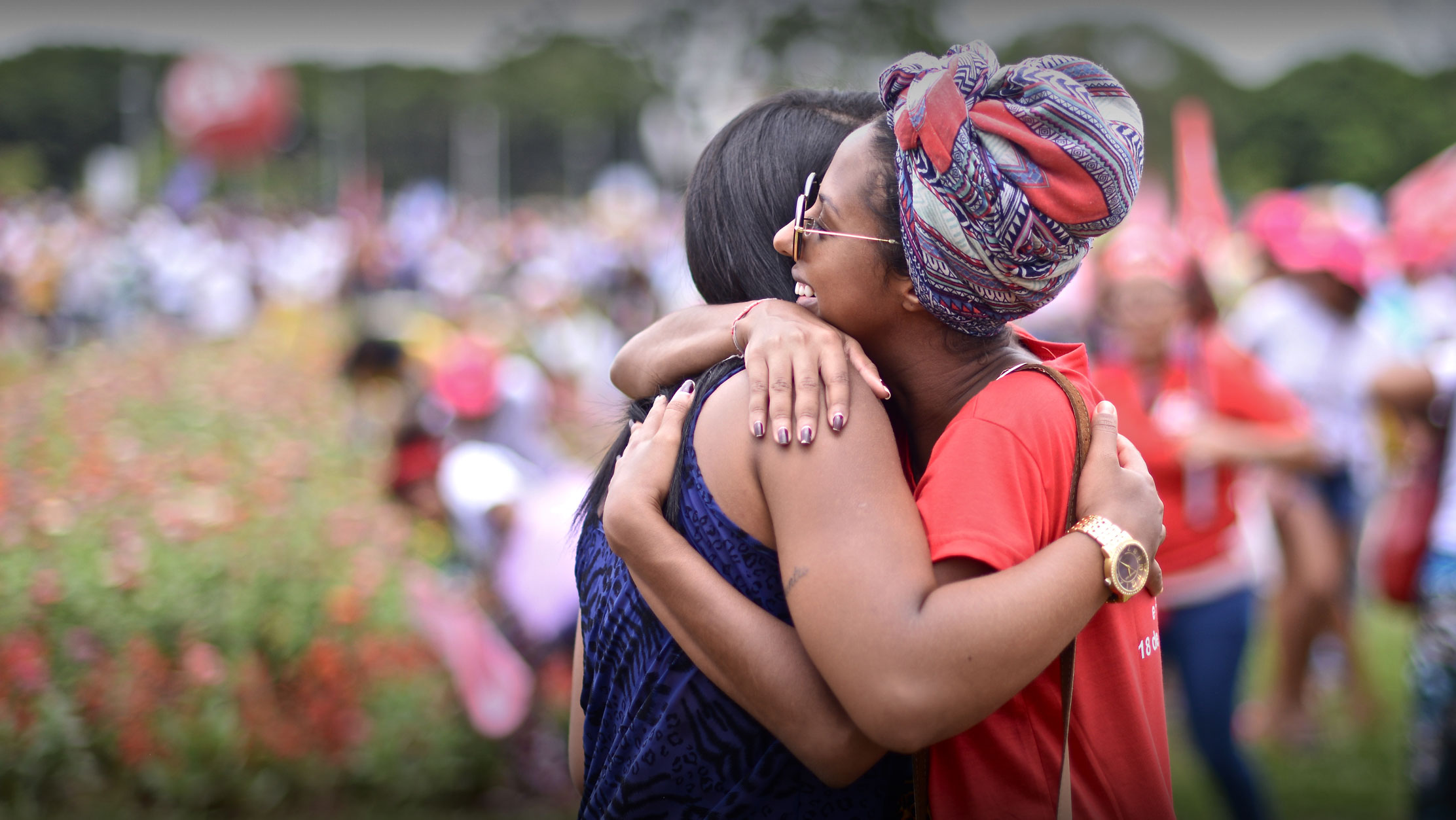As Rights at Risk, the first trends report from ther Observatory on the Universality of Rights (OURs), highlights, ultraconservatives, fundamentalists and other anti-rights actors are operating with increased impact, frequency, coordination, resources, and support in human rights spaces that have historically been a site for feminist gains and human rights advancements.1

The Commission on the Status of Women (CSW), held annually in March, has long been one of the most contested sites in the UN system. Feminists have persistently raised concern that it has become harder and harder to advance rights at CSW, since so much energy is taken up trying to hold ground against anti-rights backlash. CSW65 was no exception.
As feminists lack resources for their work, many have (with good reason) chosen to disengage and focus their energy elsewhere. However, monitoring anti-rights trends in CSW remains useful to understand the opposition that we are up against in the UN more broadly. CSW is one of many sites within the UN Human Rights system that has been infiltrated by anti-rights actors, who use a “Trojan horse” strategy to insert themselves under the guise of legitimate actors. They engage in order to boost their power, network and influence, to “spoil” international norms and law, and ultimately undermine the all of our rights.
Here, we outline some of the key anti-rights trends we observed at the CSW65.
1. Online tactics: online harassment and the victimhood narrative
Anti-rights activists adjusted their strategies to accommodate CSW’s virtual platform. Before CSW, some anti-rights actors released calls for “volunteers and advocates for life and family,” and offered digital advocacy training. This comes as no surprise. The 2017 OURs trends report highlighted how anti-rights actors routinely send delegations to UN conferences to conduct trainings of conservative activists and organize parallel and side events. This is made possible by the massive funding backing anti-rights actors.2 Between 2013 and 2017, the “anti-gender” movement received over $3.7 billion USD in funding – more than triple the funding for LGBTIQ groups globally in those years.3 In the US, over $280 million USD from the Christian right funded activities to undermine human rights in the UN, colluding with conservative states4 and other anti-rights actors.5
During CSW65, events that focused on the rights of LGBTIQ people and sexual and reproductive health and rights (SRHR) were flooded with anti-rights messages and interventions in the Zoom chat function. Some from anonymous users and some from recognised anti-rights activists. A significant number of messages shared personal stories about trauma after abortion, or gave false information about links between abortion and so-called “postabortion syndrome,” which supposedly includes breast cancer, anxiety, and depression. Characteristic of anti-rights communications tactics, messages shared sought to engage and elicit an emotional response and disseminate disinformation. Messages against Comprehensive Sexuality Education (CSE) also used fear-mongering tactics, with anti-rights disruptors accusing feminists of sexualizing children and indoctrinating them with “radical ideologies”.
While these narratives are not new, the move of CSW online saw anti-rights actors adopt more aggressive communication methods. While CSW has always been fraught and contested, it has also been a valuable space for feminist networking, collaboration, and collective thinking. The attacks by anti-rights actors were clearly aimed at distracting, disrupting, and taking over the space from feminist and women’s rights activists, as well as undermining human rights standards related to gender and sexuality.
Where moderators of events attempted to remove individual anti-rights actors who engaged in persistent and sustained harassment and disruption (as per the Forum guidelines), they were accused of “bullying and silencing” anti-abortion activists.6 This is in line with a common ultraconservative communications tactic of claiming and weaponizing victimhood. In this narrative, anti-rights actors are a “moral” voice that is under attack, who therefore have a right to ‘fight back’ and ‘defend’ themselves.
2. Building a Parallel Human Rights Framework and Co-opting our rights
At the end of CSW65, 12 opposition groups signed a statement delivered to UN missions, calling for the work of CSW65 to be “anchored in the Universal Declaration of Human Rights by honoring women’s unique feminine genius, including and especially her vital role in society’s natural and fundamental group unit, the family.” The statement echoes ongoing campaigns and declarative texts such as the recent Geneva Consensus that aim to develop and obtain consensus on language that is deeply anti-rights in content. It is a clear example of the broader strategy orchestrated by anti-rights actors to develop and promote a parallel human rights framework that reframes human rights standards and undermines the universality of rights. Promoting “the natural family” as the fundamental group unit of society, it reiterates an anti-rights discourse prevalent in other human rights spaces such as the Human Rights Council. This strategic use of “family” affirms a singular hierarchical and patriarchal conception of the family and discriminates against family forms which fall outside these rigid boundaries.
Using similar tactics of cooptation, anti-rights actors joined forces to hold an event on sex-selective abortion as a discriminatory practice against girls, “denying their right to life and their full and public participation in public life.” Using “pre-natal genocide” as a narrative to oppose abortion, anti-rights actors drew attention to grave human rights violations caused by China’s Family Planning policies. This tactical instrumentalisation - taking a legitimate issue and twisting it to serve an anti-abortion agenda - has been previously used by other anti-rights groups. For example, ADF India’s “Vanishing Girls” campaign and CitizenGO “March for Life” seen in taglines like “abortion is the prime cause of femicide in the world.”
3. ‘Sex-based’ rights as a basis for denying trans rights: convergence with ‘traditional’ anti-rights actors’ discourses and tactics
This year’s CSW saw an alarming increase in the presence of anti-trans feminists. A parallel event, “Defending Women’s Sex Based Rights” was organised by trans-exclusionary feminists associated with the Women’s Human Rights Campaign to promote their Declaration on Women’s Sex-based Rights. The crux of their campaign asserts that trans people – trans women in particular – are a threat to cisgender women and endanger women-only spaces. The event used images depicting gender-based violence to leverage false accusations against trans women,. The event also used images of trans people, evidently without their consent, invalidating their identities. Similar to other anti-rights actors, it becomes clear that the Campaign engages in sensationalism, and fear-mongering to get their messages across, for example invoking sexual trauma of cisgender women to paint trans people as a threat . Trans-exclusionary feminists flooded the Zoom chats of many events, especially those focused on sex workers and LGBTIQ rights, with the Declaration and related messages. They also claimed they were being censored, a narrative commonly used by trans-exclusionary feminists and anti-rights actors more broadly, despite their views being given space on many mainstream media platforms.
As with the “gender ideology”7 agenda overall, the “sex-based” rhetoric misuses concepts of sex and gender to push a deeply discriminatory agenda. Here we unpack some of the Campaign’s key strategies and their similarities to the tactics and discourses employed by other anti-rights actors highlighted above:
- The Campaign acts to undermine and water down the progressions of human rights standards that protect the rights of trans and gender non-conforming persons, by claiming they only apply to cis women on the basis of their “biological sex.” One event organiser argued that the concept of “gender” in international human rights law threatens to erase “biological women”. The Yogyakarta Principles in particular were targeted as “soft laws that were not applicable.” Similarly, another event attempted to frame “bodily rights” as a threat to SRHR, which the speakers claimed to be grounded only in women’s “sex-based” rights.
- Pitting the rights of one group against another: Using the articles of the Convention on the Elimination of all Forms of Discrimination Against Women (CEDAW) as its framework, the Campaign broke down the supposed forms of discrimination faced by “biological women” because of the “trans agenda.” For example, it was argued under Article 2 of CEDAW, the right to self identification infringes on cis women and lesbians’ “sex-based rights” and impedes official statistics as basis for measures against sex discrimination as required under CEDAW. The Campaign falsely positions the rights of transgender people against the rights of cisgender people by claiming that inclusion of trans and non-gender binary people under human rights norms discriminates against cis women. This manipulation, underpinned by a framework of “scarcity”, contradicts the core principles of the human rights framework - namely that all rights are alienable, indivisible, and universal. Ultimately, it serves to exclude trans people from the framework of rights protections. Other anti-rights actors employ similar discourses. The right to freedom of religion and the right to culture are routinely coopted to justify discrimination and exclusion on the basis of gender and sexuality.
- Essentialism: trans-exclusionary feminists argued that gender neutral language “removes analytical tools to understand oppression and to addressed it”, “marginalises lesbian women”, and “provides men access to women’s spaces.” The Campaign claims there is “a clear trend to eliminate motherhood as a capacity related to biological women.” Similar to the rhetoric of more traditional anti-rights actors, these arguments aim to put motherhood and the family into narrow boxes and reduce women to a binary biological sex and their supposedly “natural” roles.
- During the event, one speaker claimed that the “conversation about transgenderism is Eurocentric” and that in India, “sex and gender are the same thing.” This echoes narratives of other anti-rights actors who co-opt anti-imperialist discourses, taking real issues - stemming from the ongoing global neo-colonial dynamics of power - and spinning them to serve an anti-rights agenda. During another event, for example, anti-SRHR actors described comprehensive sexual education “as a colonial agenda and goes against African values.” Similarly, several states at the UN employ a discourse of cultural imperialism more implicitly when making reservations to human rights agreements and instruments, and to amend or develop resolutions to reflect anti-rights agendas.8
- Building alliances with UN mandate: Two of the events held by trans-exclusionary feminists were attended by UN mandate holders who were invited to speak on the dangers of expanding current human rights norms beyond “sex-based” frameworks. While both mandate holders have not explicitly supported the “sex-based” declaration, it draws attention to the risk of legitimization of trans-exclusionary agendas by UN actors in the sphere of women’s rights.
While the trojan horse tactic is a part of the anti-rights playbook, the CSW65 shows that it is no longer employed by easily recognizable ultraconservative groups. It is now used by trans-exclusionary feminists who engage in the system, to undermine progressions on gender and sexuality and protection of rights of marginalized groups. For UN spaces to uphold all human rights, they must actively counter attacks against the rights of communities and movements that have historically experienced marginalization.
1Naureen Shameem, Rights at Risk: Observatory on the Universality of Rights Trends Report 2017
2See AWID Where is the Money? 2021
3Global Philanthropy Project. 2020. Meet the Moment: A Call for Progressive Philanthropic Response to the Anti-Gender Movement.https://globalphilanthropyproject.org/2020/11/12/meet-the-moment/
4Provost, C, and Archer, N. 2020. Revealed: $280m ‘dark money’ spent by US Christian right groups globally. Open Democracy. https://www.opendemocracy.net/en/5050/trump-us-christian-spending-global-revealed
5The Observatory On The Universality Of Rights. 2017. How do we fight anti-rights fundamentalism at the United Nations? Open Democracy. https://www.opendemocracy.net/en/5050/fundamentalism-united-nations
7Anti-gender ideology by Sonia Correa https://www.youtube.com/watch?v=QhvHDCH-t5A&ab_channel=CREA
8see Naureen Shameem, Rights at Risk: Observatory on the Universality of Rights Trends Report 2017, pp.94-94. Available at: http://oursplatform.org/wp-content/uploads/Rights-At-Risk-OURs-Trends-Report-2017.pdf
